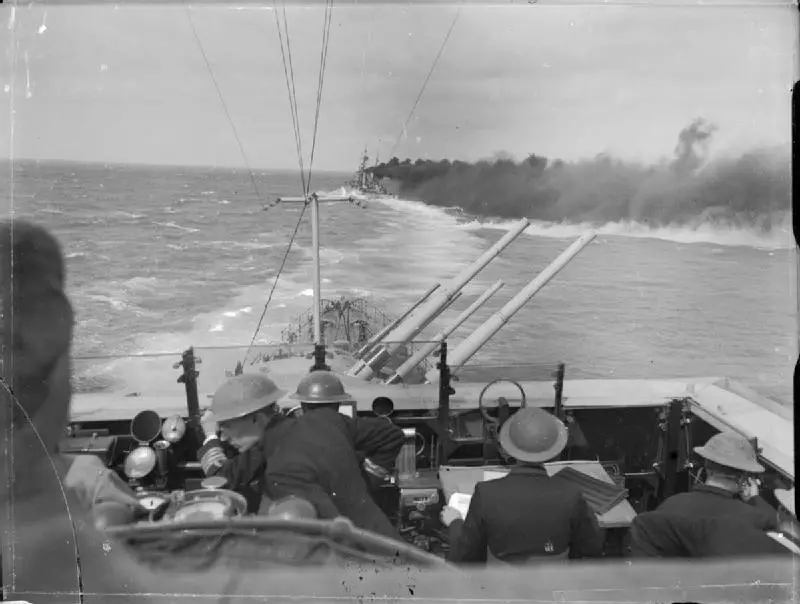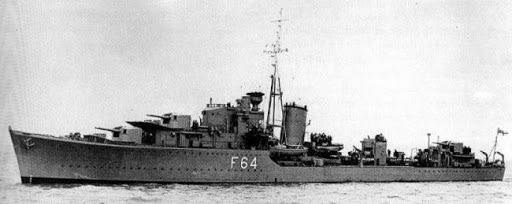Strategic context
In March 1942, the Axis and Allied forces in North Africa were entrenched along the Gazala line, building-up their strength. Malta was once again in a desperate situation; the last supply convoy (MW9) had been neutralized by Axis air forces in mid-February and the island needed urgent relief. The Mediterranean fleet was not in good shape too, the battleships Valliant and Queen Elizabeth had been knocked out of action by Italian frogmen back in December. As consequence, there were no capital ships opposing the Regia Marina in the Mediterranean. At this point, Force H in Gibraltar could rely on the old battleship Malaya and the also outdated Aircraft carriers Eagle and Argus.
A new convoy
Despite the temporary inferiority in terms of ships, it was decided to act and launch a new re-supply operation from Alexandria to aid Malta, essentially replicating the failed MW9. Rear-Admiral Vian left Alexandria in the morning of the 20th of March with three light cruisers and eleven destroyers. They escorted the tanker Breconshire and three transport ships, accompanied by an additional light cruiser and six destroyers (close escort). On the 21st, they would have joined with remnants of Force K coming from Malta. In parallel, Force H left Gibraltar to launch fighter planes destined to Malta from the old aircraft carriers.
A few hours later, Italian submarine Mocenigo sighted Force H and alerted the Italian navy high command (Supermarina) in Rome. On the 21st, another submarine, the Platino, sighted and reported the Alexandria convoy passing near Gaudo island (south of Crete) at 14 knots. Supermarina decided to leave submarines and aeroplanes to deal with Force H while ordered the battlefleet to leave Taranto and prevent the second enemy formation to reach Malta.

The Mocenigo
Admiral Iachino departed on the night of the 21st onboard battleship Littorio, accompanied by four destroyers. Admiral Parona then left Messina with the heavy cruisers Gorizia, Trento, the light cruiser Giovanni dale Bande Nere and four destroyers.
Contact and engagement
Seaplanes from Italian cruisers sighted Vian’s formation in the morning of the 22nd and Iachino ordered Parona to increase the speed at 30 knots to make contact with the enemy. Around 14:20, Parona and Vian sighted each other, the Italian division proceeded in parallel north of the British formation. Around 14:40, the Italian cruisers opened fire at 21.000 meters, focussing on HMS Cleopatra and HMS Euryalus. The British closed the distance to 18.000 meters and opened fire with their smaller guns. After an inconclusive exchange of fire, Parona steamed north to reunite with Iachino, hoping to bait the British cruisers in the face of the 381mm guns of the Littorio. However, Vian had to protect the convoy at all costs and did not start any pursuit.

The Cleopatra (making smoke) and Euryalus (foreground) moving into action
At 15:23, Parona and Iachino reunited and steamed south. At 16:30, they sighted the long smoke screen laid down by the British warships to protect themselves and the convoy. The Italian formation was on a course almost perpendicular to the British line and Iachino had to make choice. He had two reasonable options, he could have steamed south-east to put his ships at the back of the British line to attack them, or he could have steamed south-west, trying to put his formation between Malta and the convoy. He chose the latter. For the next hour, the Italians tried to attack the British ships that appeared for short moments behind the smoke or when they tried to make quick torpedo attack run out of the smoke to push away their pursuers. At 17:30, Iachino adjusted his course more to the south, trying to slow down the march of the convoy towards Malta, this would have exposed the enemy ships to more aerial attacks in the following day. Occasional gunnery exchanges continued; HMS Cleopatra was lightly hit by the Bande Nere while HMS Kingston was damaged by the fragments of a 381mm shell exploded nearby.

The HMS Kingston
Darkness was approaching and playing against the Regia Marina, without radar and still unable to see and fight at night. At 18:47, Iachino ordered to break contact and set course to the north, he would have risked a torpedo ambush at night, with no chances for defence. He was later criticized for his approach to the battle; however, he was successful in delaying the march of the convoy towards Malta, exposing it to renewed air attacks on the next day. In the night, Vian, whose ships were low on fuel, reversed course to Alexandria, leaving only the remnants of Force K and the close escort with the convoy.
Destruction of the convoy and epilogue
The facts of the 23rd March perhaps gave reason to Iachino’s conduct. In the morning, Regia Aeronautica and Luftwaffe aeroplanes harassed the convoy bringing havoc. The tanker Breconshire was hit and sunk by bombs in shallow waters just 8 miles from Malta. Similar faith suffered by the transport ship Clan Campbell while the destroyer HMS Southwold struck a mine. Only 5.000 tons of supplies out of 25.000 were unloaded, leaving Malta in a dire status, urgently in need of new aid. This was the prodrome for the more ambitious resupply operations Harpoon/Vigorous and Pedestal of summer 1942.
On the other side, the Italian fleet had an harsh return home. The extremely rough sea, that characterized the entire battle, led to the loss of the destroyers Scirocco and Lanciere. The two ships suffered engine failures on the way home and the stormy sea did not spare them, leading to the loss of 452 men.
Sources
Erminio Bagnasco, A. D. (2008). Le corazzate delle classi “Conte di Cavour” e “Duilio” (1911-1956). Edizioni Storia Militare.
Erminio Bagnasco, A. D. (2020). Le navi da battaglia classe “Littorio” 1937-1948. Roma: Ufficio storico della Marina Militare.
Giorgernini, G. (2001). La Guerra Italiana sul mare, La marina tra vittoria e sconfitta 1940-1943.